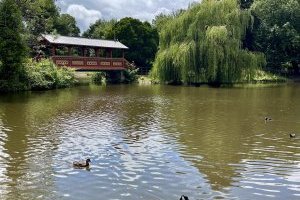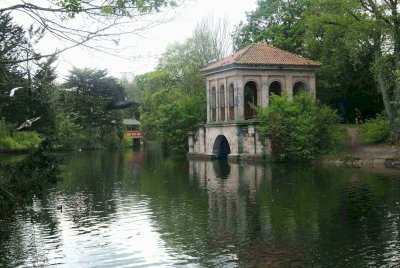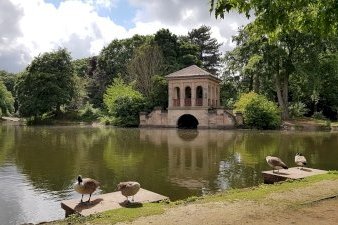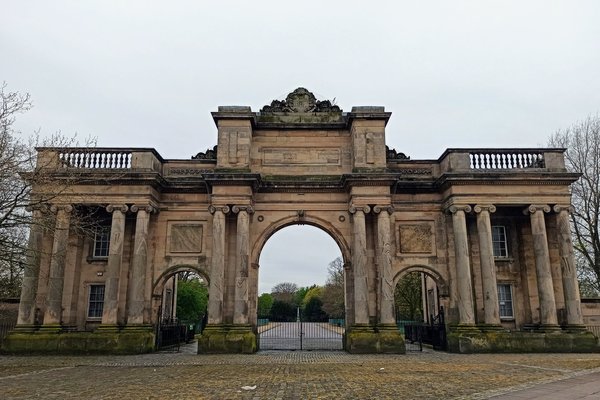United Kingdom
Birkenhead Park
Birkenhead Park, the pioneering People’s Park, is an English Landscape Garden from the mid-19th century.
The urban park was paid for by the municipality and aimed at the general public. At the grounds, a variety of architectural components were placed by the park's designer, Joseph Paxton, to simulate a journey through Western Europe.
Site Info
Official Information
- Full Name
- Birkenhead Park (ID: 6688)
- Country
- United Kingdom
- Status
-
Nominated 2028
Site history
History of Birkenhead Park
- 2023: Added to Tentative List
- Added to tentative list
- Type
- Cultural
- Criteria
- i
- ii
- iv
Links
- UNESCO
- whc.unesco.org
All Links
UNESCO.org
- whc.unesco.org — whc.unesco.org
News Article
- Oct. 25, 2024 birkenhead.news — Birkenhead Park’s World Heritage bid discussed in New York
Community Information
- Community Category
- Secular structure: Park or garden
Travel Information
Recent Connections
News
- birkenhead.news 10/25/2024
- Birkenhead Park’s World Heritage b…
Community Reviews
Show full reviews
If you are in the Liverpool area, an excursion to Birkenhead is a must: It grew rapidly in the 19th century as an extension of Liverpool in the industrial revolution and was connected to Liverpool in 1886 by the Mersey railway tunnel, the most ambitious tunnel project of the age and you can still admire its splendid ventilation towers on both sides of the river. This could be a good nomination by itself.
The wealth of the town is especially obvious around Hamilton square with one of the highest concentration of protected buildings in the UK. The classical town hall could stand in much larger cities. The check board street pattern is reminiscent of Edinburghs New Town. A visit to Birkenhead Park is pleasurable and even impressive but in a country with the greatest gardens in the world (besides Japan perhaps) it has too much competition to stick out. But it is well known that Frederick Law Olmsted, the architect of New York's famous Central Park was greatly impressed and inspired by Joseph Paxtons Design. How about a double nomination of the world's first publicly funded park and England as an inspiration for Americas most famous Park. The latter would make an excellent WHS all alone!
Just next to Birkenhead is another, even hotter candidate for WH status: Port Sunlight is a wonderful victorian factory village. The houses are by several well-known architects and I would gladly live in any of them! I had even the pleasure last …
Keep reading 0 comments
The soundscape of Birkenhead Park could almost have been the soundscape of any country park: the rustle of squirrels in the foliage, the quacking of ducks on the lakes, the sudden plosive eruption of a flock of pigeons bursting into flight. Two very English sounds intruded. The cheers of spectators heralded competing cricket matches. And over by the Grand Entrance morris dancers clonked their sticks against each other. They danced for the May Day weekend. And they danced for the last celebration of Birkenhead Park’s 175th anniversary year.
Birkenhead Park is not spectacular. It is nice enough, well cared for, and locals know to bring bags of monkey nuts to feed to the resident squirrels. It is a naturalistic landscaped expanse of pastures, woodlands and lakes criss-crossed by paths. There are a couple of noteworthy follies around the Lower Lake. The Swiss Bridge is a red, rather oriental-looking, covered wooden bridge (left in photo) and the Roman Boathouse (right) is an eye-catching lakeside pavilion. There is also a variety of fanciful mid-19th century architectural constructs fringing the park too, from the massive Grand Entrance to several ‘lodges’ (of which the ‘Italian Lodge’ with its open belvedere on Park Road South is the highlight).
In the early 19th century Birkenhead grew rapidly from a small village of barely one hundred people to a major industrial centre. This was principally due to its complementary location on the Mersey estuary opposite the ‘mercantile maritime city’ of Liverpool. Ironworks, a shipbuilding yard and …
Keep reading 0 comments
We visited Birkenhead Park in June 2022. The park is open 24h a day, 7 days a week, free of charge. You can easily park your car (for free as well) along the streets around it, or access it by public transport (by train from Liverpool, which is just on the opposite bank of the Mersey).
Birkenhead Park offers everything you can expect from a typical English city park : wide open greens and wooded areas ; an artificial lake (with ducks and swans) and meandering paths around it, bridges, a bandstand, a boathouse on its shore ; all sport facilities : tennis courts, bowling greens, and of course a cricket ground where the local junior team was practicing on that day. This makes it a very nice place to spend a leisure afternoon. It advertises itself as “the People’s park”, having been thought and created from its very origin as a public park and opened as early as 1846. Open to everyone, all the time. It would even have inspired the creator of Central Park in New York city during a trip he made to Liverpool soon after Birkenhead park had opened. All in all, I think we spent two hours in the park, including some time to enjoy ice creams.
This being said, what makes it so special or outstanding? Well, the leaflet you can pick up at the Visitors’ centre proudly reads “World’s First”. And, I would say, that’s it. We were lucky enough to …
Keep reading 0 comments
